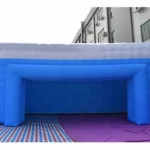Dental occlusion is the technical term given to the way that the upper and lower jaw come together when the teeth meet. When they don’t fit together properly this can be called a number of different things such as traumatic occlusion, occlusion problems, malocclusion or simply referred to as a ‘bad bite’.
Occlusion issues can cause a number of unpleasant side effects for sufferers such as;
- Pain in the jaw
- Chipped, broken or loose teeth
- Dental crowns or fillings constantly breaking or becoming loose
- Tooth sensitivity
- Headaches and neck ache
- Pain behind the eyes
- Muscle tension
How Do You Treat Dental Occlusion Problems?
The treatment for occlusion issues will depend on the individual patient and their unique dental needs. Firstly, your dentist will need to undertake a thorough examination of your teeth and mouth to determine where the issues lie as well as take any x-rays or scans which can be used to help create a customised treatment plan.
Some of the different options for treating occlusal problems are;
- Occlusal Guard
An occlusal guard more commonly known as a bite guard or mouthguard is often used as a first step. These are customised to perfectly fit the mouth and although they do not treat the issue, they are used to help stop patients from grinding their teeth at night and prevent any damage from occurring.
- Orthodontics
If there is misalignment then this can be resolved through the use of orthodontic tooth straightening solutions such as traditional metal braces or Invisalign. Moving the teeth into the correct position so that they are properly aligned can help to achieve a well-balanced bite as well as improve the overall appearance, health and function of the teeth.
- Tooth Replacement
Missing teeth can mean that the temporo-mandibular joint is not equally supported on both sides of the jaw which can result in the pressure and bite being unevenly distributed and cause misalignment. Replacing missing teeth with dental bridges, implants or dentures can help to even out the bite force and balance the jaw more evenly.
- Equilibration
Altering the direction and position of the slopes that guide the teeth together can help to reposition the jaw and allow the teeth to meet evenly. By gently and gradually adjusting the biting surface of the teeth, their function can be greatly improved but this is only usually suitable in cases where the occlusal interferences are relatively minor.
- Splint
An occlusal splint is something that is sometimes used in the medium term to reduce the spasm in the muscles and help to re-establish the optimum relaxed muscle position. Made from clear acrylic, these splints fit onto the occlusal of the upper or lower teeth to provide the ideal occlusal when the teeth bite together.
- Tooth Adjustments
Depending on the individual and their teeth, it is possible in some cases to make tooth adjustments by recontouring, sculpting and shaping teeth. This can help to correct alignment issues and improve the bite so that it is better balanced and pain free.
- Medication
There are some medications that can provide temporary or short-term relief from the pain and discomfort of occlusal problems but only suitable dental treatments that actively resolves the problem will be effective long term






Leave a Reply
You must be logged in to post a comment.